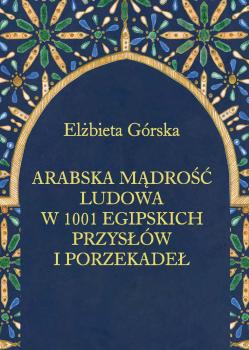Arabska mądrość ludowa w 1001 egipskich przysłów i porzekadeł
Słowa kluczowe:
przysłowia egipskie/arabskie/polskie, porównanie przysłów egipskich/arabskich i polskich przysłów, analiza językowa przysłów, porównawcza/kontrastowa paremiologiaStreszczenie
Jak pisze w swojej recenzji wybitny polski arabista prof. Janusz Danecki: „[to] interesująca książka, skrywająca w lekkim stylu i miłej opowieści wyniki badań opartych na dogłębnej wiedzy naukowej”. Na jej treść składa się wszechstronna analiza leksykalna, semantyczna i pragmatyczna ponad tysiąca ludowych przysłów egipskich oraz literackich arabskich i zestawienie ich z polskimi odpowiednikami w formie utrwalonych przysłów i porzekadeł lub też – przy ich braku – autorskich tłumaczeń wraz z komentarzem. W rezultacie zaobserwować można bogactwo ludzkiej wyobraźni i metaforyki, wyrażane w dwóch językach należących do odrębnych grup: afroazjatyckiej (semickiej) i indoeuropejskiej (słowiańskiej), co skłania odbiorcę do samodzielnej refleksji na temat różnic i podobieństw w postrzeganiu świata przez odmienne pod wieloma względami społeczności. Dzięki aneksowi zawierającemu listę 375 przysłów i powiedzeń polskich można bez trudu znaleźć ich odpowiedniki w obydwu odmianach języka arabskiego, jak również pokusić się o ich praktyczną wymowę, dzięki zastosowaniu uproszczonej transkrypcji w alfabecie łacińskim.
Rozdziały
-
Wstęp .......... 9
-
I. Identyczność treści i metafory na poziomie leksykalnym .......... 24
-
II. Podobieństwo treści i metafory, ze zróżnicowaniem leksykalnym .......... 36
-
III. Podobieństwo treści przy całkowitej odmienności metaforycznej i leksykalnej .......... 70
-
IV. Przysłowia egipskie i arabskie bez wskazania odpowiedników polskich .......... 168
-
Zakończenie .......... 213
-
Aneks: alfabetyczny wykaz przysłów polskich .......... 217
Downloads
Bibliografia





